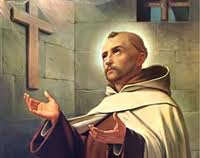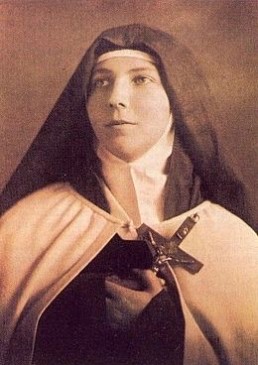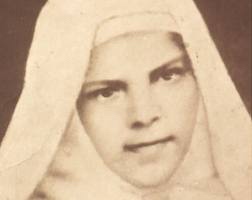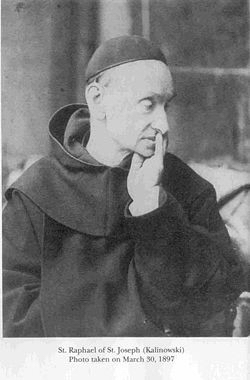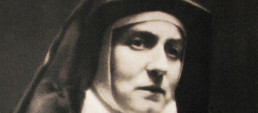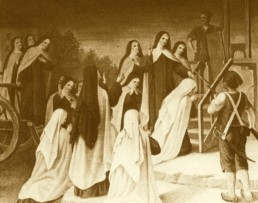Carmelite Saints
Carmelite Saints
“I have brought you into the land of Carmel to eat of its fruits.”
Over the centuries the Order of Carmel has brought forth choice fruits of holiness in the lives of her sons and daughters. Many have been raised to the glory of the altars for their outstanding witness and exemplary lives. We introduce you some of them here below. For each we have included a biographical sketch and more on their spiritual legacy bequeathed to the Church for all times.
Carmelite Spirituality
Carmelite Spirituality
Devotion to Our Blessed Mother
“How beautiful are your feet in sandals, O noble daughter!…Your head rises upon you like Carmel…” (Sng 7:2,6)
A centuries-old document tells us that our first fathers built a chapel in honor of Our Lady and placed themselves under her special patronage, consciously modelling their lives on her total surrender and loving union with God. Their Marian devotion was not only a matter of words, but expressed for them the identity of the Order. She was seen as the perfect model of what it meant to be a disciple, as well as of prayer and contemplation: a pure capacity for God, pointing others to her Son Jesus, living always in his presence, and keeping her soul as a sanctuary reserved for God alone. She was for these medieval Carmelites — officially known as the Brothers of the Blessed Virgin Mary of Mount Carmel — as she is for their twenty-first century heirs: Mother, Sister, and Advocate.
Unceasing Prayer and the Word of God
“Each of you is to stay in his own cell or nearby, pondering the Lord’s law day and night and keeping watch at his prayers…” (Rule, #8)
The beating heart of Carmel has always been this unceasing prayer, a continuous conversation with “the Lord of the law.” Carmelites looked to both Elijah and Mary as a model of prayer. Elijah’s battle cry: “The Lord lives, in whose presence I stand”, resounded in their hearts and oriented their lives toward this standing before the face of God. With Mary, the perfect contemplative, the Carmelites pondered the Word of God in their hearts, allowing it to penetrate their whole being, to form and transform them, bringing them ever closer to union with God. Through prayer, the Word, in a sense, “becomes flesh” and through their lives of deep union and surrender to the Holy Spirit, with Mary the Carmelites bring forth the Word in order to share it with others.
The Scapular
“…the sign of total consecration…” (Pope Pius XII)
It was to St. Simon Stock, in a moment of ardent petition for the preservation of the Order, that “the most glorious Mother of God appeared…holding in her blessed hands the Scapular of Carmel” and assured him of her predilection of those who would wear it piously. The Brown Scapular is perhaps the most deeply rooted symbol in the Carmelite tradition. Throughout the centuries, many miracles and blessings have been granted through the veneration of the Scapular. In contemporary piety it is looked upon as a sure and visible sign of consecration to Mary’s Immaculate Heart and an impenetrable shield assuring her maternal protection. It reminds the wearer of Our Lady’s promise to help in a special way all those who live according to her spirit and who have confidence in her mission of Mediatrix of all grace.
Teresian & Sanjuanist Influence
The charism received by Our Holy Parents, St. Teresa of Jesus of Avila and St. John of the Cross, has left an enriching mark on Carmelite Spirituality. Though the Discalced Reform begun in 1562 sought a return to the ‘sources’ and a renewed fervor to follow the “Primitive Rule” of the hermits on Mt. Carmel, the Holy Spirit also inspired Teresa and John with a fresh impetus and spiritual vision.
In founding her first monastery of St. Joseph’s, St. Teresa opted for smaller communities where a fervent contemplative life would be fostered and a vibrant community life maintained. She wanted her nuns to be “hermits living in community” with a strong apostolic thrust added to their prayer. Becoming a “prayer warrior” was not secondary to the contemplative vocation, but rather (as Teresa saw it) one of its main objectives. We are here for the Church and the world.
St. John of the Cross, in his turn, has also profoundly enriched the Order and the Church with his spirit and his writings, tracing the path up the Ascent of Mt. Carmel, journeying with us through the Dark Nights of the spiritual life and exposing us to the rays of the Living Flame of Love. As a trained theologian, gifted poet and seasoned spiritual director, St. John of the Cross articulates remarkably the contemplative path towards union with God through love.
Origins of Carmel
The Origins of Carmel
The Birth of an Order
The origin of the Carmelite Order dates back to the middle of the 12th century, when a group of pious pilgrims settled there to lead an eremitical life in imitation of the Prophet Elijah. The main elements of his life — zeal, ardor, total dedication to God, solitude, penance, prayer, and contemplation — became the way of life for the first hermits on Mount Carmel. His provoking challenge to the vacillating people of Israel: “How long will you straddle the issue? If the Lord is God, follow Him…” resounds through the generations and inspires his contemporary sons and daughters to a like absoluteness in their commitment to God.

The Rule
The Rule of the first Carmelites, given in 1209 by St. Albert, Patriarch of Jerusalem, is permeated with the flavor of Eastern monasticism. Biblical and evangelical, it is brief and unlegalistic. It begins by stating: “[You] should live a life of allegiance to Jesus Christ…pure in heart and steadfast in conscience…Be unswerving in the service of [your] Master.” All converges towards the contemplation of God. With its insistence on continual prayer, obedience, solitude, simplicity, manual work, fasting, and silence, this Rule has been called a “Rule of Mysticism.”

Migration to the West
After spreading throughout the Holy Land, the Order’s migration to Western Europe was made imperative by the constant Saracen uprisings in Palestine. Despite the patronage of some European sponsors, including St. Louis IX, King of France, adaptation to Western culture proved very difficult. The Order was in a crisis until a prominent English Carmelite, St. Simon Stock, adapted the eremitical life to make it practical in the new society in which they found themselves. His adaptations inaugurated a “golden age” for the Carmelites. Through the successive centuries, the Order expanded and has given the Church many mystics, saints, poets, theologians, and spiritual writers.
The Discalced Carmelite Reform
”…all my longing was and still is that since He has so many enemies and so few friends that these few friends be good ones.” (The Way of Perfection, ch. 1)
A new epoch began for the Order when the vivacious and attractive Teresa de Ahumada y Cepeda entered the Carmelite Monastery of the Incarnation in Avila, Spain, on November 2, 1535 “not so much for the love of God but as a means to save my soul.” This practical motivation was soon transformed through the experience of divine Love and the many mystical graces God was granting her. Her heart was filled with an insatiable thirst for God and a burning zeal which propelled her forward in rapid ascent towards the heights of transforming union.
St. Teresa was keenly aware of the needs of the church in the wake of the divisions and conflicts resulting from the Protestant Reformation. Moreover, she had come to realize the apostolic value of prayer and penance as a means of healing the disunity of Christians. With penetrating discernment she saw that the surest way to secure this efficacious, salvific prayer was to return to the Primitive Rule embodying Carmel’s first ideals.
Despite almost insurmountable difficulties and often bitter opposition, she succeeded in 1562 in establishing a small monastery dedicated to Saint Joseph within the heart of the city of Avila, delicately combining eremitical life with community life, with prescriptions for a life of continual prayer, safeguarded by strict enclosure and sustained by the asceticism of solitude, manual labor, abstinence, poverty, and fasting, in an atmosphere of openness and warm, fraternal charity.
St Teresa cherished the deep conviction that the life she restored would obtain from God an outpouring of redemptive blessings on the whole world. She saw this as the height and crown of the vocation to Carmel.
It was St. Teresa’s intention to found just one reformed monastery, but, at the insistence of the General of the Order, she enlarged her plan to include additional houses. They added up to seventeen before her death in 1582, and shortly after her death, the Reform began to spread throughout continental Europe, and now encompasses the globe. St. Teresa also extended the Discalced Reform to the Carmelite Friars, beginning with the young St. John of the Cross. Together they were to communicate to the fullness of our charism and spirituality.
Besides her talents as Reformer, St. Teresa was prolific with her pen and has left an invaluable legacy of books on prayer and spirituality written in her own inimitable style. She bears the distinction of being the first woman to be declared a Doctor of the Church, by Pope (now Saint) Paul VI in 1970. Her statue, placed among those of prominent saints and founders in the Vatican, is captioned “Mother of Spirituality,” and countless are the “children” whom she has inspired to seek strength, peace, and fruitfulness in the way of prayer she teaches: “To be on intimate terms with Him whom we know loves us.”
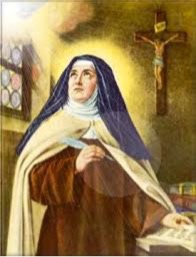


Charism
The Carmelite Charism
The Carmelite charism is a gift of the Holy Spirit to the Church. It has a unique history and origin with a spirituality that continues to foster holiness in the lives of her many sons and daughters.
Origins
Discover the birth of the Carmelite Order & its growth through the centuries.
Spirituality
Learn more about the elements of Carmelite Spirituality and its rich heritage.
Saints
The Saints of Carmel continue to inspire us by their lives of holiness and teach us how to make the charism our own.


